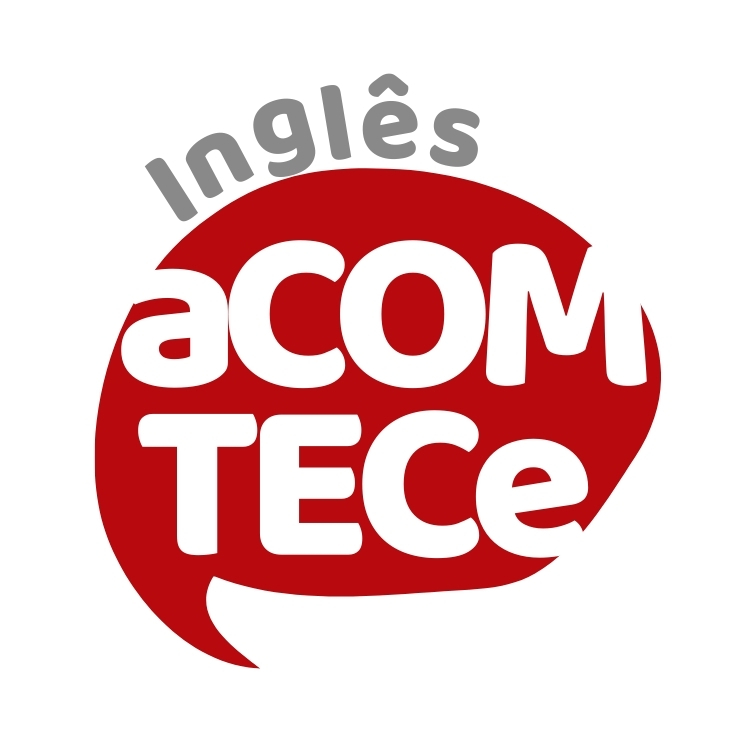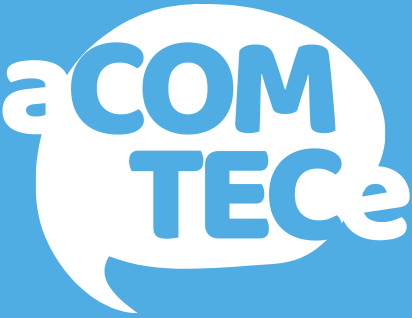
Inglês aCOMTECe
O intuito do Inglês aCOMTECe é desenvolver habilidades da língua inglesa entre os seus pesquisadores membros, para fins de apresentação oral em eventos científicos e intercâmbio entre pesquisadores internacionais parceiros do grupo de pesquisa. Essa atividade foi motivada pela parceria entre o aCOMTECe/IFSP e a Norwegian University of Science and Technology (NTNU). O intuito dessa parceria é realizar a troca de experiências na pesquisa sobre a Comunicação Científica entre membros da universidade com os do grupo de pesquisa. As apresentações têm duração de 30 minutos e se estruturam a partir de exposição do tema de pesquisa, problematização, objetivos, fundamentação teórica, objetivos, metodologia, resultados e discussão e conclusão. O Inglês aCOMTECe é realizado por meio de videoconferências, atualmente utilizando a plataforma zoom, com periodicidade semanal, e duração de uma hora. Após o término de apresentação, há uma discussão sobre a organização da pesquisa e sobre o uso adequado do inglês, com sugestões e comentários da líder e dos membros do aCOMTECe.
Inglês aCOMTECe aims to develop English language skills of aCOMTECe researchers with the purposes of preparing for oral presentations at scientific events, and of exchanging research skills with our international partners. This project was motivated by the partnership between aCOMTECe-IFSP/Brazil and NTNU/Norway, whose purpose is exchanging experiences about Science Communication. We usually have 30-minute presentations about a research topic in zoom videoconferences, once a month. After the presentation, we have a discussion about the research structure and the use of English, with suggestions and comments by the leader and members of aCOMTECe.
Comunicação e Tecnologia: delimitação estatística de uma análise semântica automática de textos científicos
Gabriel Evaristo Santana da Silva
A comunicação científica ocorre entre os processos de pesquisa e comunicação, a partir dos quais cognição e língua estão conectadas para comunicar a narrativa da pesquisa. A Semântica de Frames é um modelo do significado linguístico, no escopo da abordagem teórica linguístico-cognitivista, aplicado para comprimir o todo de qualquer processo complexo, como o científico e o da escrita, em partes gerenciáveis. Com o auxílio de ferramentas tecnológicas, o cientista da linguagem tem acesso à informação semântica contida em uma palavra ou expressão linguística. Partiremos da análise de um corpus publicado em periódicos de alto impacto em 2015/2016 na Web of Science. Os resultados da análise automática geraram listas de frequência e gráficos que requerem um delineamento estatístico que apontem para a conclusão do estudo. A proposta deste projeto é definir esse delineamento para, assim, retratar, a partir de padrões semânticos (frames) evidenciados linguisticamente (textos), a narrativa da pesquisa científica. Além da contribuição teórico-metodológica, há uma pedagógica, que é o uso da conclusão do estudo para o ensino de escrita científica.
Palavras-chaves: Comunicação. Frames. Delineamento. Estatística. Padrões.
Communication and Technology: statistical delimitation of an automatic semantic analysis of scientific texts
Scientific communication occurs between the research and communication processes, from which cognition and language are connected to communicate the research narrative. Frame Semantics is a model of linguistic meaning, within the scope of the linguistic-cognitivist theoretical approach, applied to compress the whole of any complex process, such as scientific and writing, into manageable parts. With the help of technological tools, the language scientist has access to the semantic information contained in a word or linguistic expression. We will start from the analysis of a corpus published in high impact journals in 2015/2016 on the Web of Science. The results of the automatic analysis generated frequency lists and graphs that require a statistical design that points to the conclusion of the study. The purpose of this project is to define this design so as to portray, from semantic patterns (frames) linguistically evidenced (texts), the narrative of scientific research. In addition to the theoretical-methodological contribution, there is a pedagogical one, which is the use of the conclusion of the study for the teaching of scientific writing.
Keywords: Communication. Frames. Design. Statistic. Standards
Padrões narrativos e figurativos em Comunicação Científica: um estudo linguístico-cognitivo de um artigo em Humanidades
Hiago Marcilis Henrique Cândido Rosa
A integração entre Comunicação Científica, Tecnologia e Linguística Cognitiva, no escopo do Grupo de Pesquisa aCOMTECe, possibilita o estudo dos padrões narrativos e figurativos de textos científicos. Os padrões narrativos são estabelecidos a partir da análise de frames e os figurativos, por meio de metáforas e analogias. Esse estudo resultou na organização de um livro. Esta comunicação apresenta a análise semântica, contida em um dos capítulos do livro, do artigo científico da área de humanidades, “A Exaustão de Sísifo: articulação entre Toyotismo, Neoliberalismo e Teoria do Capital Humano”. Após a análise semântica, foram realizadas coletas de dados por meio de um formulário on-line e uma entrevista com o autor. Com essa metodologia híbrida, confirmamos a intersecção entre cognição e língua para comunicar a pesquisa científica.
Palavras-chaves: Linguística Cognitiva. Tecnologia. Comunicação Científica. Narratividade e Figuratividade.
Narrative and figurative patterns in Science Communication: a linguistic-cognitive study of a paper in Humanities
The integration between Science Communication, Technology and Cognitive Linguistics, in the Research Group aCOMTECe, enables a study in narrative and figurative patterns of scientific papers. The narrative patterns are established from frame analysis and the figurative ones from metaphors and analogies. This presentation shows the semantic analysis of a scientific paper in Humanities called “Sisyphus’ Exhaustion: articulation between Toyotism, Neoliberalism and Human Capital Theory”. After the semantic analysis, we carried out data gathering using on-line survey and an interview with the author. From a mixed methodology, we confirmed the intersection between cognition and language to communicate scientific research.
Keywords: Cognitive Linguistics. Technology. Science Communication. Narrativity and Figurativity.
Modelo computacional para a Basic Text Pipeline: Pré-processamento com MongoDB e Sharding
Matheus Sardeli Malheiros
A implementação do banco de dados MongoDB para armazenamento de informações está se tornando cada vez mais comum na área da Tecnologia juntamente com a Educação e, portanto, torna-se ainda mais importante compreender sua implementação para armazenamento de arquivos. Com o intuito de disponibilizar os resumos científicos para uso pela Basic Text Pipeline e facilitar sua manipulação, este trabalho apresenta um experimento de implementação do banco de dados MongoDB. Ele é um banco de dados não-relacional, que não possui estrutura pré-definida e permite trabalhar com dados semi-estruturados e não-estruturados, como é o caso de resumos científicos, além de utilizar o método Sharding para dividir o banco de dados entre vários servidores. Por fim, o MongoDB é altamente escalável e permite que o banco de dados cresça de maneira a armazenar grande volume de dados praticamente sem perder o desempenho.
Palavras-chaves: Banco de dados. NoSQL. MongoDB. Sharding. Basic Text Pipeline.
Computational modeling for Basic Text Pipeline pre-processing with MongoDB and Sharding
The implementation of the MongoDB database for information storage is becoming more and more common in the area of Technology together with Education and, therefore, it becomes even more important to understand its implementation for file storage. In order to make the scientific abstracts available for use by the Basic Text Pipeline and to facilitate their manipulation, we present an experiment to implement the MongoDB database. It is a non-relational database, which has no predefined structure and allows working with semi-structured and unstructured data, such as with the scientific abstracts, in addition to using the Sharding method to split the database among multiple servers. Finally, MongoDB is highly scalable and allows the database to grow in such a way as to store large amounts of data with virtually no loss of performance.
Keywords: Database. NoSQL. MongoDB. Sharding. Basic Text Pipeline.
Semafor: Teoria e Aplicação
Nicholas Gomez Zilli Castro
Trabalhar com resumos de um texto científico é uma tarefa complexa relacionado a área da linguística cognitiva, pois de um texto podemos extrair inúmeras informações importantes, as quais trazem a essência de todo o texto. Logo, para podermos analisar conceitos específicas de um resumo, chamados de frames, foi necessário com o passar do tempo criar um software que analisa e apresenta essas palavras que os evocam. Dessa demanda o parser de frame-semântico foi criado, sendo um programa que trabalha com a análise semântica de frames em um texto, cujo processo divide-se. em etapas de identificação e por fim, gera um arquivo final apresentando os frames encontrados em cada linha, assim como outras informações técnicas importantes. Um dos parsers mais conhecidos nesse ramo chama-se Semafor, e o objetivo desta apresentação é mostrar como o Semafor funciona, comentar sobre o referencial teórico. Além disso, mostrar alguns problemas que podem aparecer trabalhando com esse software, relacionado a caracteres especiais, e apresentar um código em Python que faz a execução automática de uma grande quantidade de arquivos no Semafor.
Palavras-chaves: Frame. Parser. Semafor. Ciência de Dados. Python.
Semafor: Theory and Application
Working with abstracts is a complex task talking in Cognitive Linguistics, because in one text we could extract very important information that bring the essence of the whole text. In order to analyze specific concepts of an abstract, called frames, it has been made necessary to create a software that analyzes and shows the important words of a file. Based on that, the frame-semantic parser was developed, which isa software that works with the frame-semantic analysis of a text, by dividing it in different identifications and generating an output file presenting the frames of each line and other technical information. One of the most famous softwares in this area is called Semafor, and the objective of this presentation is to present how Semafor works, and talk about theorical references. Besides that, we aim to show some problems that could appear working with that kind of program, related to special characters, and show an automate code in Python that automatically executes a huge quantity of files on Semafor.
Keywords: Frame. Parser. Semafor. Data Science. Python.
Linguística Cognitiva como caixa de ferramentas para a Comunicação Científica: metáforas, frames e narrativas
Rosana Ferrareto Lourenço Rodrigues
Esta palestra apresenta mecanismos cognitivos e linguísticos, tais como metáforas, frames e narrativas, como estratégias para comunicar ciência. Ao observar alguns exemplos na mídia, em notícias e artigos científicos, os objetivos são: entender como conceitos da ciência, tecnologia, engenharia e matemática são formados; desenvolver habilidades para descrevê-los; e aprender como usá-los para inovar na comunicação científica, dentro das convenções, para estabelecer conexão com a audiência.
Palavras-chaves: Comunicação Científica. Linguística Cognitiva. Ciência, tecnologia, engenharia e matemática.
Cognitive Linguistics Toolbox for Communicating Science: metaphors, frames and narratives
This lecture touches on some cognitive and linguistic mechanisms, such as metaphors, frames and narratives, as strategies to communicate science. By looking at some examples in the media, in news reports and in scientific papers, you will be able to understand how some STEM concepts are formed, develop skills to describe them, and learn how to use them to innovate in science communication within the conventions and by connecting to your audience.
Keywords: Science Communication. Cognitive Linguistics. STEM.
